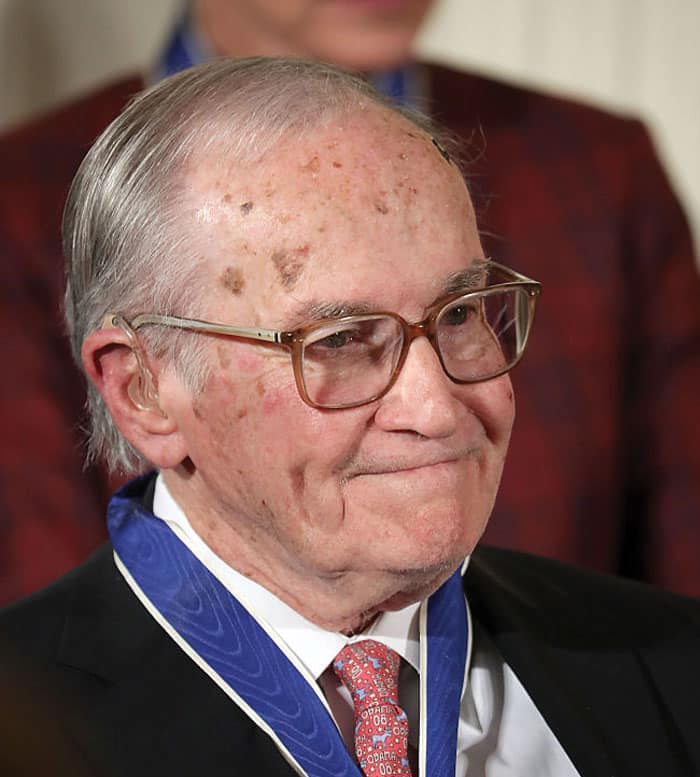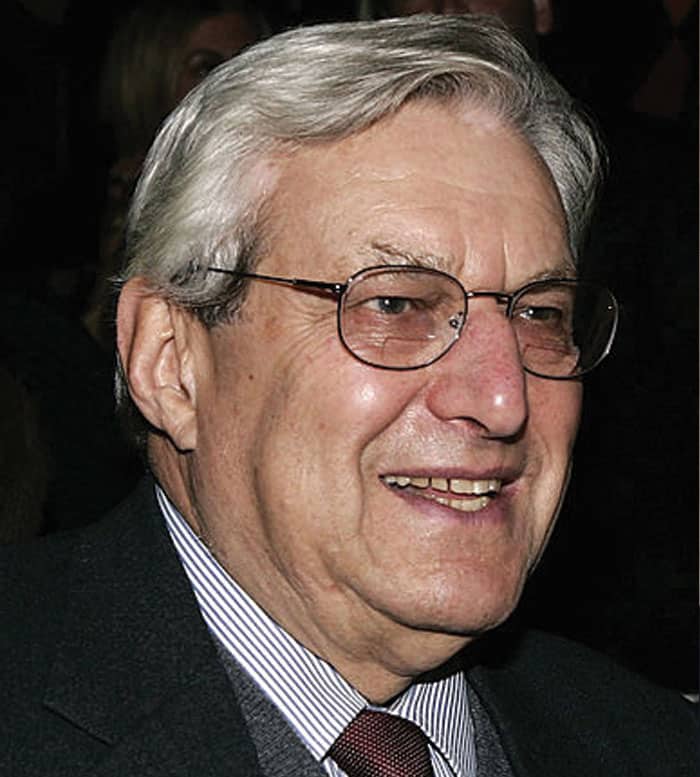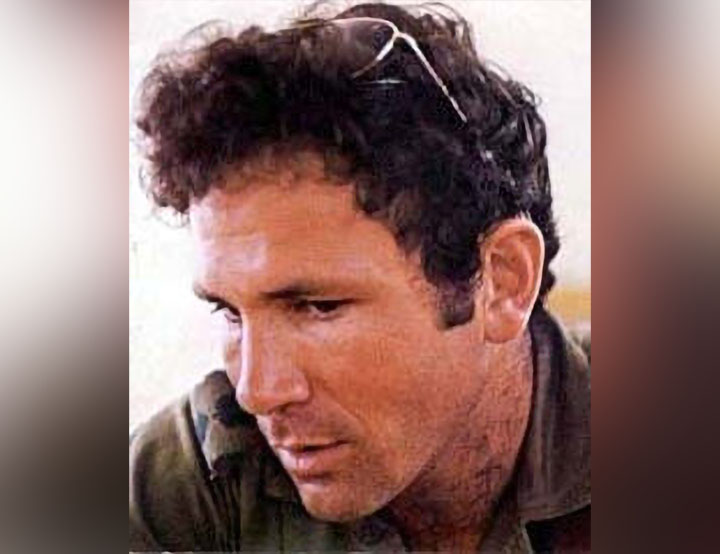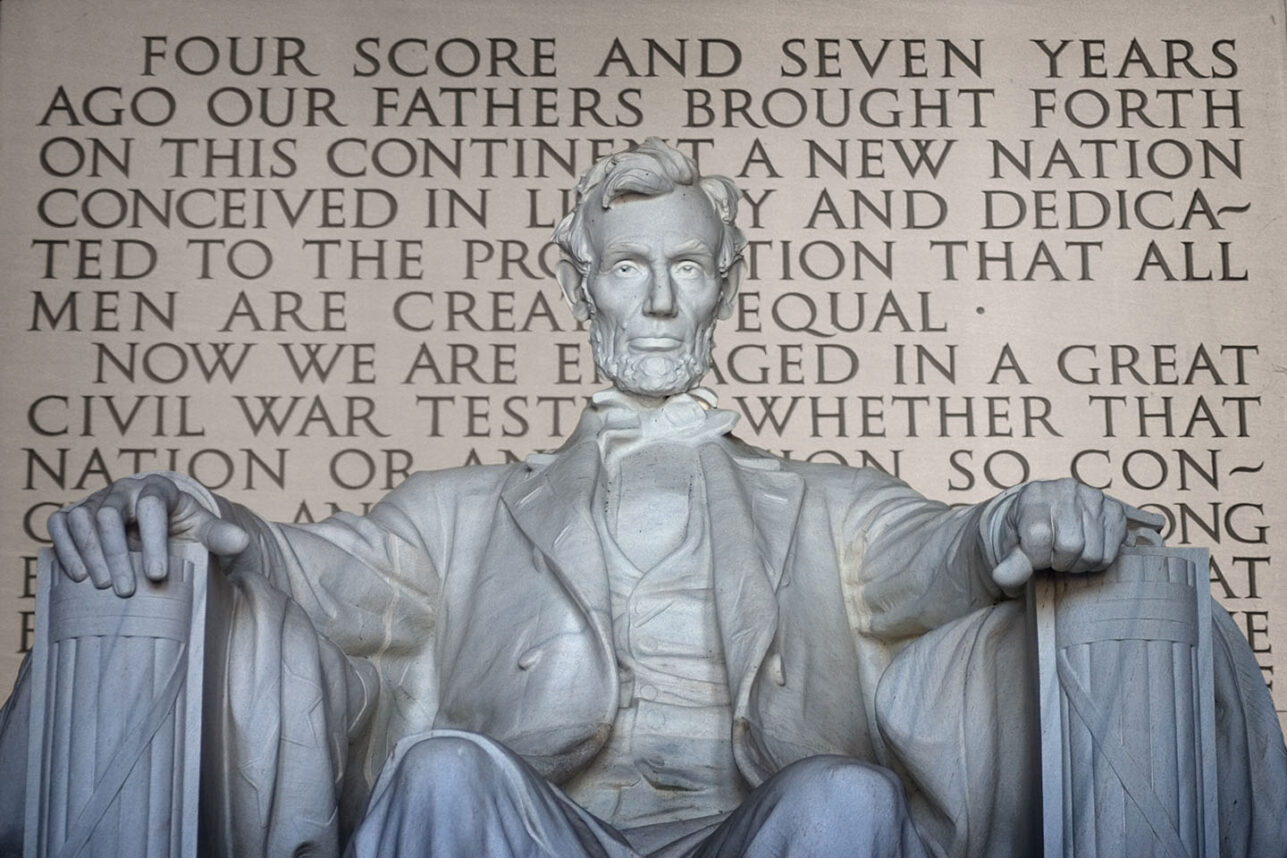
We all wait for that moment. The audience at the 75th Primetime Emmy Awards becomes silent as the lights dim, orchestral music is cued, and a powerful singer — think Jennifer Hudson — appears dramatically as the traditional In Memoriam segment of the show begins. This year, the Television Academy has compiled a list of over 250 people who left us since the last Primetime Emmy Awards were given out (https://www.emmys.com/in-memoriam). They brightened our lives as performers, series creators, writers, producers, journalists, executives, and even government officials. And they brought pride and joy to the Jewish community.
On TV, the names and images of the departed flash by so quickly (and some are omitted inadvertently) — we barely have any time to register what lasting impact they had on screen, and beyond television.
All are worthy of this special tribute, which reflects their lasting importance in shaping our viewing experience, and beyond that, influencing our larger thinking in ways that will stand the test of time.
Although many of the departed were notable for a particular season or series, a select group of seven Jews were among those who truly moved the needle; they brought extra-special qualities to their television work, and to humanity itself. All are worthy of this special tribute, which reflects their lasting importance in shaping our viewing experience, and beyond that, influencing our larger thinking in ways that will stand the test of time.
Consider this as a handy guide while watching the In Memoriam during this year’s 75th Primetime Emmy Awards broadcast, hopefully deepening that fleeting experience and our cultural connection to them. More importantly, we have designed this to serve as a heartfelt reference to be reviewed well after the show’s closing credits begin to scroll. Simply put, we remember these Jewish television luminaries with enduring respect and appreciation.

Norman Lear, 101
More than just a prolific sitcom producer, Norman Lear’s comedies often imparted messages about how society was changing. Beginning in the early 1970s, Lear left a permanent imprint on America by exposing, with plenty of laughs, hot-button issues to a wide audience. He placed a spotlight on topics like civil rights, abortion, divorce, feminism, homosexuality, alcoholism, and patriarchy.
Virtually nothing was off-limits in a Lear sitcom. He created sharply drawn, oftencontroversial characters, like the bigoted Archie Bunker in “All in the Family,” a program that was the top-rated TV show for five consecutive years. That series broke fresh ground with frank but funny depictions of social issues within a dysfunctional but loving family that mixed liberals with a staunchly conservative father figure.
Other Lear shows knocked down barriers by featuring mostly black casts, like “The Jeffersons” and “Good Times,” or “Maude,” with a boldly feminist lead character. With Norman Lear’s successes piling up, other producers felt increasingly comfortable presenting real-world topics in comedic settings, connecting to audiences as they were experiencing situations in real life.
Archie Bunker thought of himself as a patriot, but Norman Lear was the real deal. His love for America’s values clearly ran deep. He had been a gunner in World War II bombing missions over Germany. He also was a passionate liberal who founded People for the American Way, a nonprofit nonpartisan advocacy group.
And in a striking gesture, Lear and his wife Lynn spent over 8 million dollars to buy one of the few surviving 1776 copies of the Declaration of Independence. He called it our nation’s birth certificate and mounted a three-and-a-half-year cross-country tour of the document to some 100 cities in all 50 states, including visits to more than a half dozen Presidential libraries. The goal was to inspire Americans to participate in civic activism, to exercise their rights, and to vote.
Bernard Kalb, 100
Bernard Kalb, along with his younger journalist brother Marvin Kalb, brought viewers a deep understanding of global events through his pioneering reporting of international affairs. Through him, we began to see how the United States was positioned in the larger arc of history that was being shaped outside our shores.
For nearly a quarter century at CBS and NBC (and before that, at The New York Times), Kalb reported on the scene with sobriety and authority. He covered wars, revolutions, and the diplomatic breakthroughs that ultimately led to the end of the Cold War. These were complex situations that required explanation without simplification, and Kalb’s ability to do this helped educate generations about the high stakes at hand, and often the fragile egos of those who were in charge. By setting a high standard for diplomatic reporting, he created a new path for other television journalists to follow, including Ted Koppel (ABC), Andrea Mitchell (NBC), and Christiane Amanpour (CNN).
Kalb left broadcasting in 1985 to become the chief State Department spokesman during the Reagan Administration, in part to have an active role not just in reporting on diplomatic events, but in shaping them. He was the first journalist who had covered the State Department ever to assume that role. Kalb brought a stature and professionalism that, like journalism, depended upon truth and credibility as essential assets.
With these principles in mind, Kalb then resigned from this job of a lifetime in 1986 to protest what he called an unconfirmed “reported disinformation program” conducted by the administration against the Libyan leader Col. Muammar Gadhafi. In doing so, he became a pioneering public official to warn about the corrosive potential of government disinformation. He set an example with a principled resignation that amplified this warning around the world, and to this day.

Newton Minow, 97
Newton Minow, a former aide to two-time Democratic presidential nominee Adlai Stevenson, became an overnight sensation shortly after President Kennedy appointed him as Chairman of the Federal Communications Commission in 1961. That May, Minow addressed the annual National Association of Broadcasters convention in Washington, DC, and brought some tough love to the assembled television executives. He admonished them for the shows they were airing in prime time, calling the terrain a “vast wasteland” and admonishing them to do better. Never before had a government official who ran an agency that could renew or reject broadcast licenses delivered such a stark critique.
Few viewers could disagree with it, however. As Minow noted, the “public interest” required that television should serve a better and higher purpose than just as window dressing for endless advertising messages. “Vast wasteland” became a rallying cry for those who wanted television to do better, although those clinging to the status quo refused to remain silent. When Sherwood Schwartz created “Gilligan’s Island” for CBS, he made sure that viewers always remembered the name of the sinking ship that left the crew marooned — the SS Minnow.
Minow’s influence on television programming extended well beyond his rhetorical flourish and the necessary national conversation that it generated. He was instrumental in the creation of public television, and served as Chairman of PBS during its formative years. And while understanding the immense power of television, he also realized that its impact could be expanded exponentially if television networks could distribute programming more widely and seamlessly through communications satellites.
As FCC Chairman, he championed the government’s role in promoting communications satellites that have expanded what we can watch at home and abroad — to thousands of channels on cable and in streaming media. In the end, technology has proven to be the best tool for countering the limited choices that Minow perceived when he delivered his “vast wasteland” commentary so dramatically.

Ed Bleier, 94
Bugs Bunny, Daffy, Duck, Elmer Fudd, Porky Pig, Road Runner and their friends were kept alive for future generations by a television executive named Edward Bleier. Bleier’s extraordinary career in television helped nurture the growth of MTV, Nickelodeon, and The Movie Channel. He pioneered the concept of interactive and pay-per-view television. Any of these accomplishments would have been enough for him to be remembered as a legendary TV businessman.
But his role as President of Warner Brothers Animation is even more enduring. Bleier aggressively challenged Disney’s leadership position for Saturday morning cartoons that kept us enthralled. His genius was in mining the Warner Brothers vault, which included Looney Toons cartoons, and repackaging them for endless enjoyment of kids and their parents.
Unlike Mickey Mouse or Donald Duck, the Looney Toons characters definitely were on the edge — always ready to fall off a cliff or be blown up in the interest of making us laugh. Danger seemed less dangerous when we saw the Tasmanian Devil race around.
Bleier made sure that these characters would live perpetually on screen. Many more Looney Toons shorts were ordered for production during the past 50 years, and creative partnerships with the likes of Steven Spielberg, Michael Jordan, and LeBron James brought us Tiny Toon Adventures and Space Jam. Thankfully, Tweety’s chirping still remains as sweet music to our ears.
Ed Bleier realized that resurrecting Looney Toons was reviving a beloved animated comedic tradition. But he had an even more ambitious idea about another tradition — Thanksgiving. He spent years thinking about how to create a day that was more than just overeating and watching endless football games. He wanted people to celebrate the national holiday as a true day of gratitude, and organized readings and activities that could be pursued by all ages as the turkey and trimmings were passed around the dining room table.
Bleier then wrote The New York Times bestselling book, “The Thanksgiving Ceremony: New Traditions for America’s Family Feast,” as an aspirational guide for making Thanksgiving every bit as memorable as the Fourth of July. “My attitude is that everything embodied in this country is in that holiday and should be celebrated accordingly,” he noted. Ed Bleier reminded us that Thanksgiving always begins with thanks.
Betty Rollin, 87
Network news correspondent Betty Rollin covered many important stories as a broadcast journalist for NBC, ABC, and PBS, but her most powerful ones were very personal and public. They were about Rollin’s own experience with cancer and assisting her mother’s death.
After a series of delays and errors, Rollin was diagnosed in 1975 with malignant breast cancer and underwent a mastectomy. Her bestselling memoir and made-for-TV movie about that experience, starring Mary Tyler Moore — “First, You Cry” — pushed the emotional trauma and recovery option prominently into the public spotlight. She was amazed at the personal responses to “First, You Cry” and found relief from reading breast cancer jokes sent to her by women around the country.
Her 1985 bestseller, “Last Wish,” detailed how she helped her mother’s assisted death when she was in great pain from ovarian cancer (some thought the book could be interpreted as an admission of murder). It also reached a wide audience as a made-for TV movie, with Patty Duke portraying Rollin.
Rollin didn’t enjoy opening up many intimate personal details with the public, but she felt it was important to tell the truth about them as part of her activism. Her self-reporting was not about vanity but about opening windows on important topics that had been taboo in polite society.
“Last Wish” created a national conversation that led to Oregon’s first-in-the-nation Death with Dignity law in 1984. Rollin also became a National Death with Dignity Center board member. She shined a light on both these issues, which would help millions of people confronting comparable situations.
Betty Rollin faced her final health challenge in 2023 when suffering from gastrointestinal issues and arthritis. She chose voluntary assisted suicide in Switzerland, but requested not to have that revealed until after her passing.

Jerry Springer, 79
Jerry Springer helped usher in a style of daytime talk show that resembled professional wrestling in its depiction of heroes and villains, along with the drama that played out whenever good and evil lined up to battle each other for an hour. Springer clearly was the ringmaster, egging his guests on to say and do outrageous things to the delight of the studio audience.
For loyal viewers, the experience was often like watching a slow-moving car wreck. Yet he also let viewers know that they shouldn’t take the on-screen antics so seriously; they always got a sense that Springer was skeptical, even embarrassed, by what was transpiring, yet willing to play along in the interest of making the show interesting — worthy of buzz well before the advent of social media. Where Phil Donahue brought a palatable plain vanilla to daytime talk, Springer’s confection was a complete ice cream sundae — lots of whipped cream, and of course, loads of nuts. He helped us eat it up without worrying too much about the calories.
Springer honed his television skills in several different high-stakes fields — law, news, and politics. As a politician, including a stint as Mayor of Cincinnati, he had broad exposure to connecting with people from all walks of life. As a TV news anchor, he knew that storytelling was essential to make viewers care about what they were seeing every night before they went to sleep. And his passion for social justice led him to take a leave of absence from law school to work full time for Robert F. Kennedy’s campaign for President in 1968. His commitment to social justice stemmed from his Polish-born parents, who escaped from Berlin in 1939, enabling them to flee to the United Kingdom as World War II began.
Jerry Springer brought unusual intelligence to presiding over a circus-like atmosphere that made his show a ratings blockbuster. He knew that seeing the sense of madness he orchestrated actually might help us cope with the greater real-world tensions that he had experienced in the other facets of his professional life.

Paul Reubens, 70
Paul Reubens, a versatile comedic actor, was a performance artist at heart. While his man-child alter ego, Pee-wee Herman, seemingly was meant for children, he also made it okay for adults to experience childhood wonder once again.
Reubens was part of the legendary L.A. improv troupe, the Groundlings. When his “Saturday Night Live” audition didn’t work out, he took Pee-wee Herman to the stage, and ultimately to his acclaimed CBS Saturday morning series, “Pee-wee’s Playhouse.” The outrageous character, trademark skintight suit and bowtie, rouged cheeks, and imaginative Playhouse reflected a totally offbeat world.
His unflinching commitment to Pee-wee Herman’s eccentric character, who had a seemingly endless fascination with almost everything, amused kids and adults alike. Reubens’ unrelenting commitment to always stay in character may have resembled the single-minded focus of his father, a founding pilot in the Israeli Air Force and one of just five military aviators who flew missions against Arab forces in smuggled fighter planes during the 1948 Arab-Israeli War.
Paul Reubens hoped Pee-wee Herman and the world he developed for him would inspire creativity and open-mindedness about nonconformity for children, without being overly preachy or teachy. “Pee-wee’s Playhouse,” with its garish colors and characters that included a talking Floory, a hugging Chairry, and Mr. Window with a life of their own, reflected Reubens’ wild make-believe environment, which carried over from his collection of eccentric art and design at home.
This fantastical environment on screen was a tilted look at reality — a mix of postmodernism, secondhand store chic, and all-around kitsch. It expressed the imagination of Reubens and other series creators, including painters, cartoonists, and sculptors. “Pee-wee’s Playhouse” stands the test of time as Paul Reubens’ expansive vision for the sheer joy it brought to all ages.
As often is said in the Jewish tradition, may their memories be a blessing. While all lives seem to flash by quickly on screen and off, their indelible contributions undoubtedly will trigger deep appreciation for all they contributed to television viewers, and our lives in 2024 and beyond.
Stuart N. Brotman and Bob Males grew up in suburban New Jersey as television Baby Boomers, glued to their living room screens. Friends since high school, they pursued their shared viewing passions professionally. Brotman served as President and CEO of The Museum of Television & Radio (now the Paley Center for Media) in New York and Los Angeles and is a noted media scholar. Males has won several regional Emmy Awards as a television producer for newscasts, documentaries, and other programs. They email each other daily with updates about those in the television world who have recently passed on, expressing sorrow, but also sharing fond recollections about those whose impacts are destined to be felt by millions of TV viewers for years to come.

































 More news and opinions than at a Shabbat dinner, right in your inbox.
More news and opinions than at a Shabbat dinner, right in your inbox.